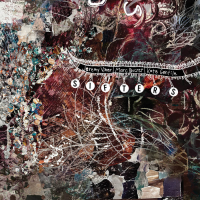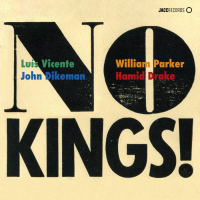Home » Jazz Articles » Album Review » Keith Jarrett: Life Between the Exit Signs
Keith Jarrett: Life Between the Exit Signs
Beginning an association with bassist Charlie Haden and drummer Paul Motian that was to last for nearly ten years, Jarrett demonstrates a penchant for overt lyricism on "Margot" and "Love No. 1," a somehow distinctly American flavour on "Lisbon Stomp," and free playing on the title track and "Love No. 2," which follow the Ornette Coleman modus operandi of structured themes leading into completely open improvised sections. He even covers one standard, Cole Porter's "Everything I Love," to show his love of the Great American Songbook, a characteristic that would, of course, be brought to greater fruition with his now twenty-year old Standards Trio with Gary Peacock and Jack DeJohnette.
Haden, having already spent a good deal of time with Coleman, brings a strong sense of adventure coupled with a clear sense of history and tradition. Motian, at that time better known for his more subdued work with Bill Evans, gets the opportunity to play in a looser setting, displaying his abilities as textural player and colourist that would gain him a greater reputation in years to come.
But as strong as Haden and Motian are as musical personalities, it is Jarrett who clearly shines on this recording. Less concerned with some of the more odd choices that he made in the mammoth '70 session that resulted in three intriguing but largely uneven recordings— The Mourning of a Star, El Juicio and Birth —this is a more straightforward session that, while perhaps less widely experimental, ultimately succeeds as a more consistent document of where Jarrett came from and who he was ultimately to become. Life Between the Exit Signs is a remarkable first outing from a pianist who has inarguably become as important as his sources, moving the tradition forward while at the same time maintaining a clear reverence for it.
This remastered version of Life Between the Exit Signs is currently only available in the UK.
Track Listing
Lisbon Stomp; Love No. 1; Love No. 2; Everything I Love; Margot; Long Time Gone (But Not Withdrawn); Life Between the Exit Signs; Church Dreams
Personnel
Keith Jarrett
pianoKeith Jarrett (piano), Charlie Haden (bass), Paul Motian (drums)
Album information
Title: Life Between the Exit Signs | Year Released: 2004 | Record Label: Atlantic Jazz
Tags
PREVIOUS / NEXT
Support All About Jazz
 All About Jazz has been a pillar of jazz since 1995, championing it as an art form and, more importantly, supporting the musicians who make it. Our enduring commitment has made "AAJ" one of the most culturally important websites of its kind, read by hundreds of thousands of fans, musicians and industry figures every month.
All About Jazz has been a pillar of jazz since 1995, championing it as an art form and, more importantly, supporting the musicians who make it. Our enduring commitment has made "AAJ" one of the most culturally important websites of its kind, read by hundreds of thousands of fans, musicians and industry figures every month.




















